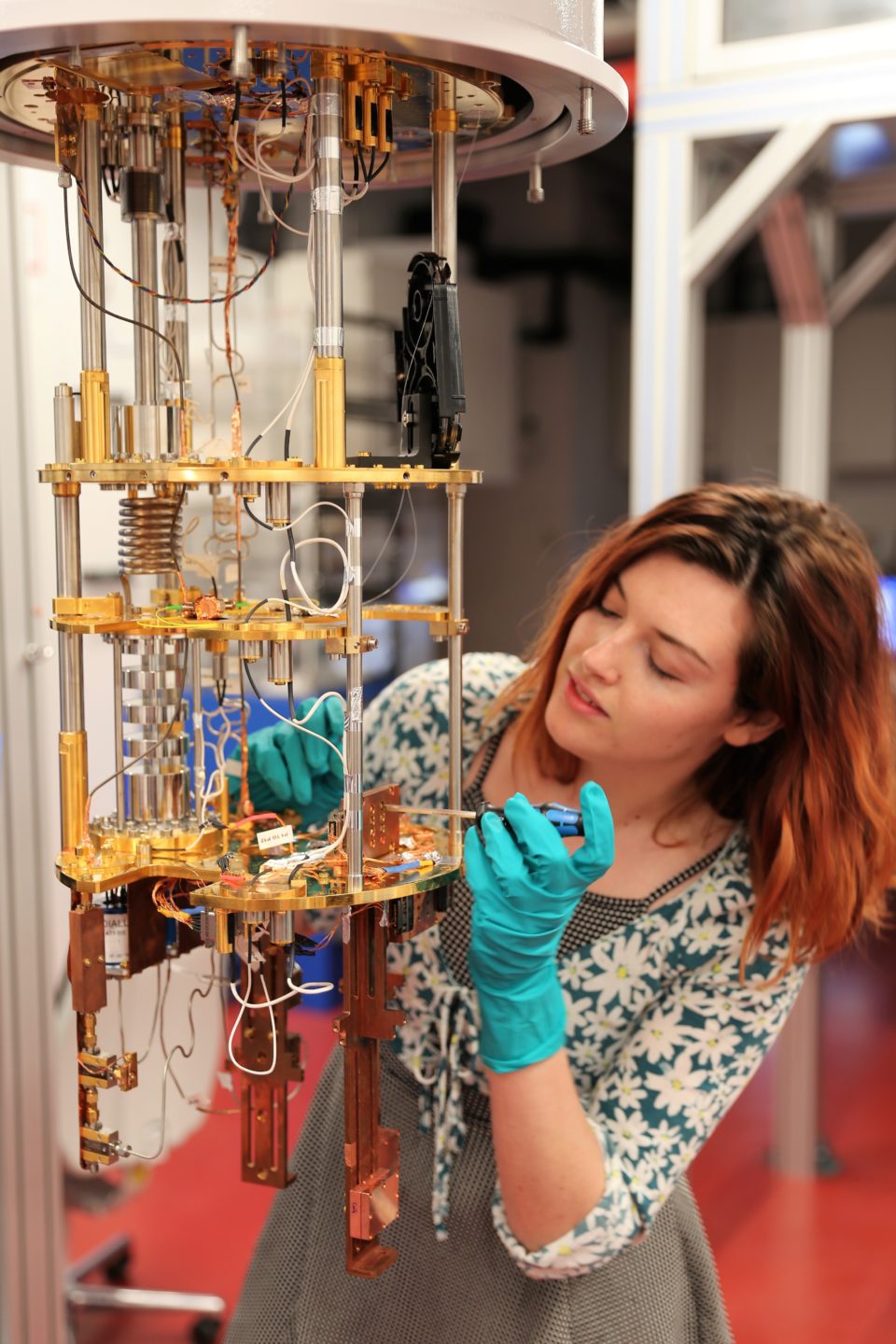July 22, 2019
‘Cool Tech’ on campus: freezing & refrigeration technology used at IST Austria
Technology used at IST Austria produces temperatures close to absolute zero
Did you know that technology at IST Austria can produce some of the coldest temperatures in the known universe?
IST Austria has a diverse range of refrigeration and freezer technology that cryogenically preserves biological samples for Electron Microscopy and lowers the energy state of particulate matter (atoms and molecules) to within a few thousands of a degree above 0 Kelvin (–273.15°C) to study quantum effects!
The technology is used across campus by a variety of multi-disciplinary research teams for topics ranging from Quantum computing to the biomedical imaging of cells, proteins and amino acids.

Cooling Quantum computers, atoms and molecules to near 0 Kelvin (-273.15°C)
Quantum computers need to be supercooled to temperatures near 0 Kelvin (-273.15°C or absolute zero) for their Qubits (the Quantum equivalent of a bit) to achieve stable energy states and compute reliably. To achieve this, Scientists at IST Austria use a special type of cooling technology known as a ‘dilution fridge’.
Dilution fridges (pictured below) use a mixture of Helium-3 and Helium-4 isotopes to entropically cool a small area down to a few thousands of a degree above absolute zero. This technique works by effectively distilling the lighter Helium-3 out of a majority Helium-4 solution. The absence of the Helium-3 solution causes an osmotic pressure that forces some of the lighter settled Helium-3 into the denser Helium-4 solution. As the lighter Helium-3 moves into the denser Helium-4 solution, it absorbs heat (entropic cooling) and cools the area down to within a few thousands of a degree above 0 K.

Scientists will then effectively attach a Quantum computer or prototype to this supercooled area, which in turn provides a stable environment for observation and testing.
Using this technology not only allows Scientists to operate and test Quantum computers but also prototypes that may, in the future, interface with the classical computers that we use on a daily basis.
What is a Cryogenic Electron Microscope?
Electron microscopes use beams of electrons to illuminate samples that are generally on the order of millimetres to nanometers in size. Since electrons have a wavelength that are smaller than visible light, Electron Microscopes are able to produce much higher resolution images which reveal more information about a sample on an atomic and molecular scale.
Generally speaking, the smaller an object is, the harder it is to image as the electron beams will alter molecules around the sample (distorting the image) or the sample itself is unable to withstand the high vacuum conditions required by the electron microscope. This is where Cryogenic Electron Microscopes (Cryo-EM) come in, they are able to view samples that are cryogenically frozen to preserve their structure, use less intense electron beams and are therefore able to resolve a sample’s structure down to the resolution of nanometers.

Cryo-EMs are able to image cells, viruses, proteins and amino acids helping our research groups better understand viruses and other biological molecules. Globally, Cryo-EMs have been able to help study and address some of the world’s most recent pandemics such as the Zika and Ebola crises which occurred in 2014 and 2015 respectively.
Preserving crucial research samples – What are ultra-low temperature and cryogenic freezers?
Ultra-Low temperature (ULT) Freezers
Ultra-Low Temperature (ULT) Freezers are used to preserve biological samples by keeping them at very low temperatures ranging from -45C to -85C. At these temperatures, the degradation of biological molecules such as proteins and nucleic acids are slowed significantly and therefore can be stored for the long-term.
Cryogenic Freezers
At temperatures below -150°C, all biological activity is effectively in a state of permanent suspension and therefore little to no degradation of the sample occurs. For this reason, cell, protein and amino acid samples are generally frozen using a special technique which involves immersing the sample in a vial cooled by liquid nitrogen. For Cryo-Electron Microscopy, samples are placed in an ethane solution, cooled by liquid nitrogen which in turn results in a freezing process so rapid that the ice crystals do not have the time to form (amorphous ice). Once the sample has been successfully frozen it goes through a rigorous quality management process to make sure that it is of sufficient quality to be used in a Cryo-Electron Microscope. This process can take anywhere from a few days to a couple of weeks.





